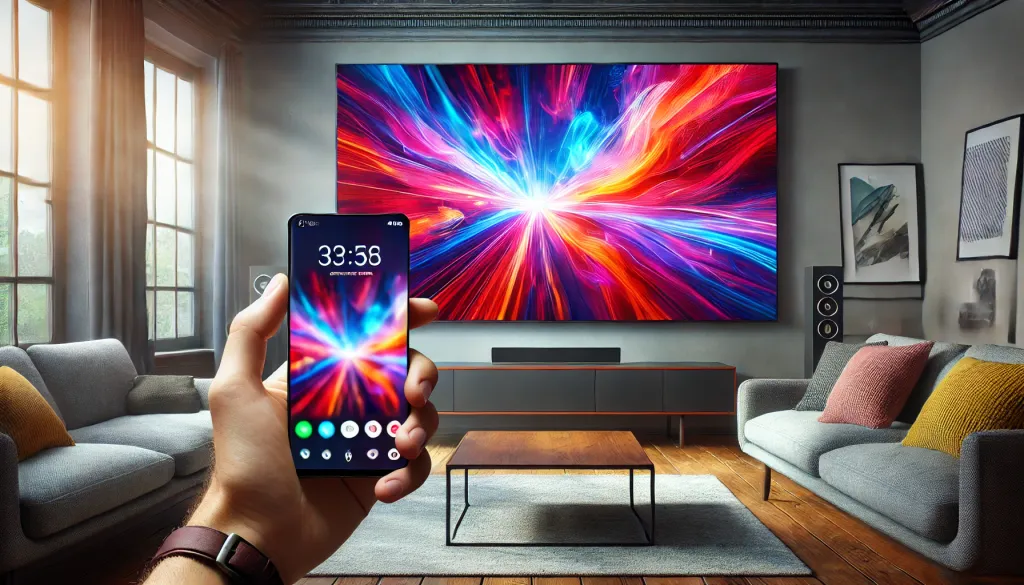
The Chinese chase continues – Korea fights to maintain dominance in OLED
For several years now, there has been a real race in the display industry. Not long ago, the dominance of Samsung and LG in the OLED segment seemed unshakeable, but today there are serious warning signs – Chinese companies are rapidly closing the technological gap and are eager to take over the market. Moreover, a similar situation has already occurred with LCD displays, where Koreans eventually gave way to producers from the Middle Kingdom. Could this scenario repeat itself now with OLED?
Chinese companies are closing the technological gap
Lee Cheong, president of Samsung Display, during a meeting with journalists as part of the regular Korea Display Industry Association gathering, did not hide his concerns. – “It is very concerning that Chinese companies are catching up so quickly in the OLED segment. There is still a clear technological advantage for Korea, but the Chinese are getting closer and closer” – he said.
A similar position was expressed by the president of LG Display, Chung Cheol-dong. During the same event, he announced that both companies (LG and Samsung) would cooperate at the industry and government levels to secure their leading position in the face of macroeconomic challenges and the impending expansion of new technologies, such as artificial intelligence (AI), mobile solutions, and virtual reality (VR).
Is There a Repeat of the LCD Market?
The current situation in the OLED industry brings to mind the history of the LCD market, where Chinese companies (including BOE, TCL CSOT) dominated this segment due to mass production, low costs, and advanced manufacturing processes. As a result, Samsung and LG almost completely withdrew from the production of LCD panels, and domestic companies – including Samsung Electronics and LG Electronics – began sourcing this type of display from Chinese manufacturers.
In the case of OLED, the situation appears to be different, as this technology is still more complicated to produce and requires specialised know-how that Koreans have been developing for years. Nevertheless, as Lee Cheong acknowledged, the progress of Chinese companies is so rapid that it will be more difficult to maintain the comfortable distance that has existed so far.
BOE, TCL CSOT and others – increasingly ambitious production plans
Chinese giants known for LCD production, such as BOE and TCL CSOT, have already taken their first steps in the production of OLED panels, both small and medium (for smartphones and tablets), and are increasingly looking towards larger formats (televisions, monitors).
BOE has announced a multi-billion dollar investment in a new 8.6G line dedicated to the production of large OLED panels.
TCL CSOT is developing inkjet printing technology to produce high-efficiency OLEDs at lower costs. However, this is just the beginning – the company plans to gradually scale up production, primarily for monitors, laptops, and in the longer term, also for televisions.
Importantly, BOE in the smartphone display segment has already surpassed Samsung Display in terms of the number of panels supplied, and Apple is increasingly keen to diversify its supplier base. According to analysts at TrendForce, shipments of Samsung panels for smartphones are expected to decrease by about 3.5% this year compared to the previous year.
Korean response – WOLED, QD-OLED, or perhaps another breakthrough?
To counter the Chinese offensive, Samsung Display and LG Display are focusing on the development of increasingly advanced versions of OLEDs:
QD-OLED from Samsung is becoming brighter and more energy-efficient.
WOLED from LG is also evolving, providing ever higher image quality and longer panel lifespan.
Both companies are also working on innovations such as transparent and flexible panels (so-called rollable, foldable), and LG Display is even experimenting with the concept of “wearable OLED” designed for wearable devices.
In the background, there is talk of even newer technologies, such as QD-LED and MicroLED, which could completely revolutionise the market in the coming years. Samsung is already investing in the development of QD-LED and is also trying to reduce the horrendous costs of producing MicroLED. Meanwhile, competitors – including Nanosys, Sharp, and TCL CSOT – also do not intend to miss this opportunity and are actively working on similar solutions.
Tariffs, trade wars and collaboration with the government
Geopolitical issues and potential trade wars remain significant. Lee Cheong openly speaks about the necessity of collaborating with the government to secure the interests of Korean display manufacturers against possible new tariffs or restrictions in the international market. – “If the television and mobile device industries are affected, we too will not remain unscathed. We will monitor the situation and work with the government to find good solutions” – emphasised the president of Samsung Display.
The Korea Display Industry Association (KDIA) has announced an increase in the number of trade experts and strengthened lobbying efforts to protect the domestic industry from the adverse effects of trade policy.
What's next for OLED dominance?
Although Samsung and LG are still perceived as leaders in the OLED field, concern is evident. As experiences with LCD have shown, the Chinese can quickly catch up in technological advancements, and with massive investments and government support – achieve a global production scale that allows them to dominate the market both in price and quantity.
Will this time also see a similar change in guard? According to experts, the speed of implementing innovations, readiness for new areas of application (e.g. automotive, XR devices, laptops), and geopolitical factors will decide the outcome of the competition. For now, one thing is certain: the struggle for the future of OLED is gaining momentum, and companies from Korea and China will do everything to come out victorious. And we, as consumers, can only keep our fingers crossed that this competition translates into lower prices 😉.
Source: hdtvtest.co.uk, biz.chosun.com, displaysupplychain.com
 Ignacy Giżyński
Ignacy Giżyński













